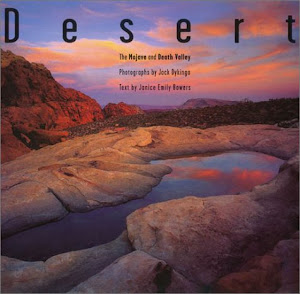
Dance and the Music of J. S. Bach
Catégorie: Entreprise et Bourse, Érotisme
Auteur: Mitch Albom
Éditeur: Andrew Roberts, J.A. Huss
Publié: 2016-02-10
Écrivain: Peter Sis, R Morgan
Langue: Tagalog, Russe, Latin, Vietnamien
Format: epub, pdf
Auteur: Mitch Albom
Éditeur: Andrew Roberts, J.A. Huss
Publié: 2016-02-10
Écrivain: Peter Sis, R Morgan
Langue: Tagalog, Russe, Latin, Vietnamien
Format: epub, pdf
Suite No. 1 in G major | The Cello Suites of Bach - The Prelude of the 1st Suite for unaccompanied cello by Bach is possibly the most immediately recognizable solo work for the instrument. The movement starts with an arpeggiated figure that takes full advantage of the natural resonance of the instrument: an open G, an open D, and a B one full step above the open A string. That resonating G and D really define the essence of the piece ...
Johann Sebastian Bach - Wikipedia - Johann Sebastian Bach was born in Eisenach, the capital of the duchy of Saxe-Eisenach, in present-day Germany, on 21 March 1685 (31 March 1685 ).He was the son of Johann Ambrosius Bach, the director of the town musicians, and Maria Elisabeth Lämmerhirt. He was the eighth and youngest child of Johann Ambrosius, who likely taught him violin and basic music theory.
J. S. Bach: His Life and Legacy | Music Appreciation - J. S. Bach’s abilities as an organist were respected throughout Europe during his lifetime, although he was not widely recognized as a great composer until a revival of interest and performances of his music in the first half of the 19th century. He is now generally regarded as one of the greatest composers of all time.
Johann Sebastian Bach - Wikipedia - Johann Sebastian Bach was born in Eisenach, the capital of the duchy of Saxe-Eisenach, in present-day Germany, on 21 March 1685 (31 March 1685 ).He was the son of Johann Ambrosius Bach, the director of the town musicians, and Maria Elisabeth Lämmerhirt. He was the eighth and youngest child of Johann Ambrosius, who likely taught him violin and basic music theory.
Baroque music - Wikipedia - Baroque music (UK: / b ə ˈ r ɒ k / or US: / b ə ˈ r oʊ k /) is a period or style of Western art music composed from approximately 1600 to 1750. This era followed the Renaissance music era, and was followed in turn by the Classical era, with the galant style marking the transition between Baroque and Classical eras. The Baroque period is divided into three major phases: early, middle, and ...
Johann Sebastian Bach | Biography, Music, Death, & Facts ... - Bach was the youngest child of Johann Ambrosius Bach and Elisabeth Lämmerhirt. Ambrosius was a string player, employed by the town council and the ducal court of Eisenach. Johann Sebastian started school in 1692 or 1693 and did well in spite of frequent absences. Of his musical education at this time, nothing definite is known; however, he may have picked up the rudiments of string ...
Badinerie from Orchestral Suite No. 2 in B minor (J.S ... - from Bach's Orchestral Suite No. 2 in B minor. In the 20th century this last movement from Orchestral Suite No. 2 has become one of the most famous show-pieces for solo flutists, due to its quick pace and difficulty. It is also often heard as a mobile phone ringtone, since it became one of the favorite Bach ringtones on the first polyphonic models by Nokia. The term “badinerie” (from ...
Johann Sebastian Bach Free Sheet Music & MP3 Downloads ... - Johann Sebastian Bach was a German composer, organist, harpsichordist, violist, and violinist whose sacred and secular works for choir, orchestra, and solo instruments drew together the strands of the Baroque period and brought it to its ultimate maturity. Although he did not introduce new forms, he enriched the prevailing German style with a robust contrapuntal technique, an unrivalled ...
Rock music - Wikipedia - Rock music is traditionally built on a foundation of simple unsyncopated rhythms in a 4 4 meter, with a repetitive snare drum back beat on beats two and four. Melodies often originate from older musical modes such as the Dorian and Mixolydian, as well as major and minor modes. Harmonies range from the common triad to parallel perfect fourths and fifths and dissonant harmonic progressions.
Rave - Wikipedia - Rave culture incorporated disco culture's same love of dance music spun by DJs, drug exploration, sexual promiscuity, and hedonism. Although disco culture had thrived in the mainstream, the rave culture would make an effort to stay underground to avoid the animosity that was still surrounding disco and dance music. The key motive for remaining underground in many parts of the US had to do with ...
[online], [pdf], [epub], [kindle], [free], [audible], [audiobook], [download], [read], [goodreads], [english]


















0 komentar:
Posting Komentar
Catatan: Hanya anggota dari blog ini yang dapat mengirim komentar.